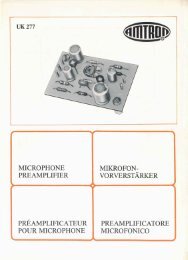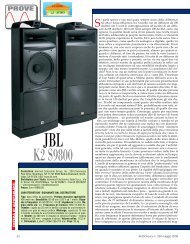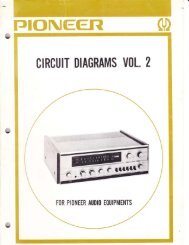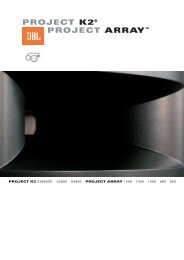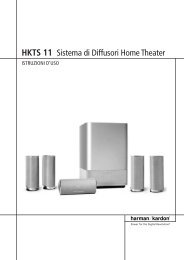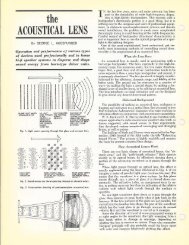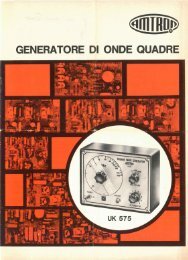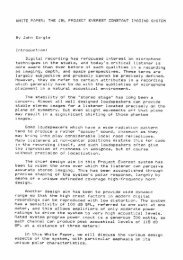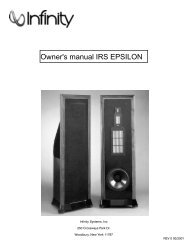JBL - K2 S9800 - White Paper (english) (2001).
JBL - K2 S9800 - White Paper (english) (2001).
JBL - K2 S9800 - White Paper (english) (2001).
Create successful ePaper yourself
Turn your PDF publications into a flip-book with our unique Google optimized e-Paper software.
Figure 9 shows front, top, side and perspective line drawings of the systems, illustrating the<br />
various curved transitions that define the smooth acoustical boundary conditions for the LF<br />
driver and the MF and UHF horns.<br />
The dividing network topology combined with the acoustic behavior of the individual<br />
transducers provides 24-dB-per-octave transitions between adjacent system elements. The<br />
response of each element is -6 dB at the transition frequency. These rapid transitions provide<br />
more uniform system response over a larger vertical listening angle than that provided by lowerorder<br />
slopes, and this translates into an increased solid listening angle for the system. The<br />
contribution of each element, along with the overall on-axis response of the system is shown in<br />
Figure 10.<br />
Another important factor in the design of the dividing network is the use of DC biasing of the<br />
capacitors in this system. The biasing ensures that normal zero-crossings of the audio waveform<br />
from plus to minus are displaced from actual zero potential and thus do not force the capacitors<br />
to undergo a zero charge condition, even momentarily. This is analogous to "Class A" behavior<br />
in amplifiers.<br />
[Insert Figures 9 and 10 about here.]<br />
Details of the system's directional response are shown in Figure 11. This family of curves is<br />
defined as follows:<br />
Curve 1. On-axis response.<br />
Curve 2. Average of response over 30° horizontal and 15° vertical angles.<br />
Curve 3. First reflected sound power sum.<br />
Curve 4. Total reflected sound power sum.<br />
Curve 5. On-axis overall directivity index (dB).<br />
Curve 6. On-axis directivity index for first reflections (dB).<br />
[Insert Figure 11 about here.]<br />
The overall trend is for the system to be fairly nondirectional at low frequencies, reaching a<br />
plateau of uniformity at about 1 kHz, where the midrange Bi-Radial horn comes into play, and<br />
extending beyond 20 kHz as the UHF takes over.<br />
Under these conditions the system will integrate well with a wide variety of acoustical<br />
conditions. In a room where the boundary absorption is uniform over the midrange, the system<br />
will provide ideal spectral coverage over a broad listening angle.<br />
The impulse response of the system is shown in Figure 12. The response shows system time<br />
alignment within an interval of about 350 microseconds, along with highly damped low<br />
frequency response<br />
[Insert Figure 12 about here.]<br />
5



